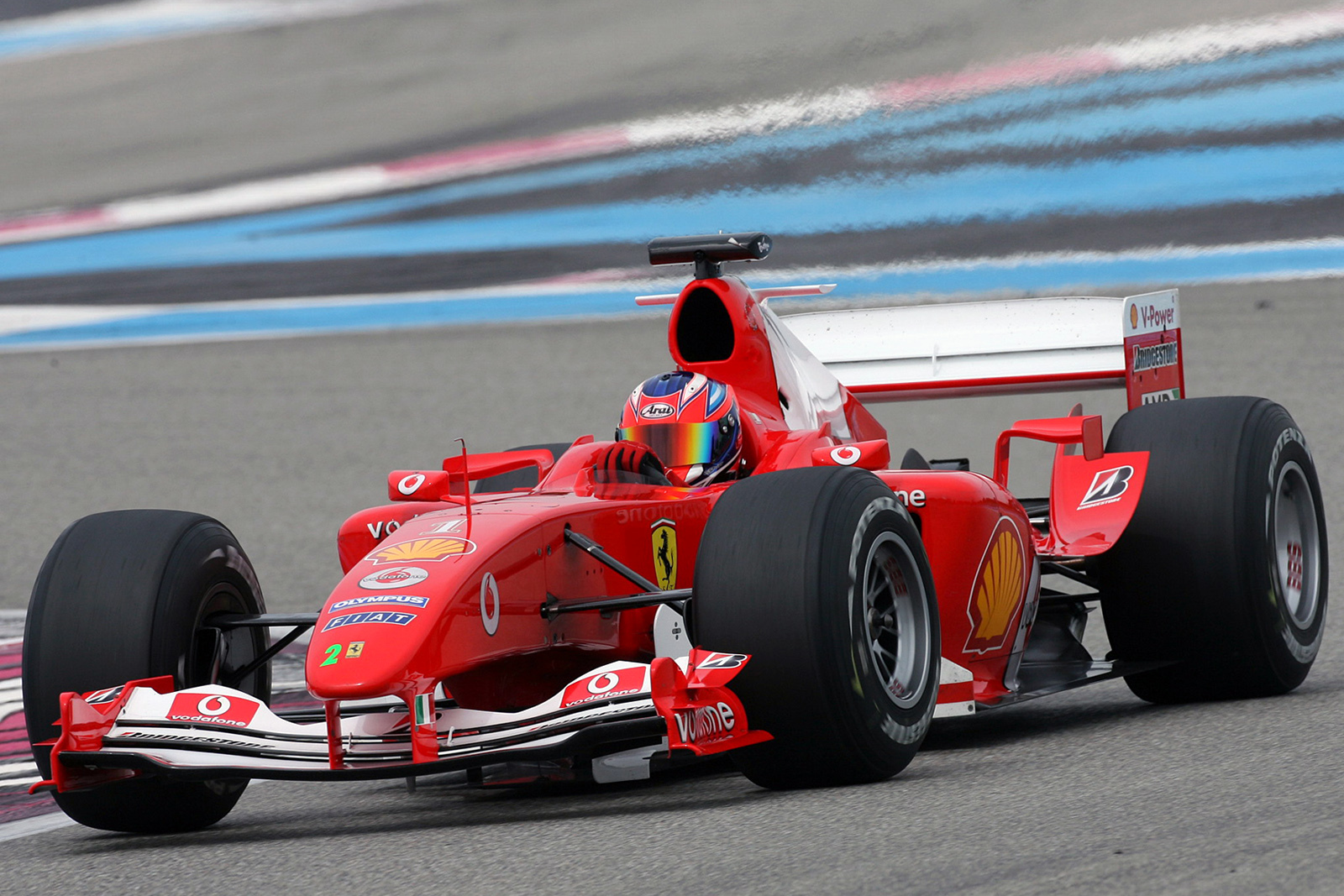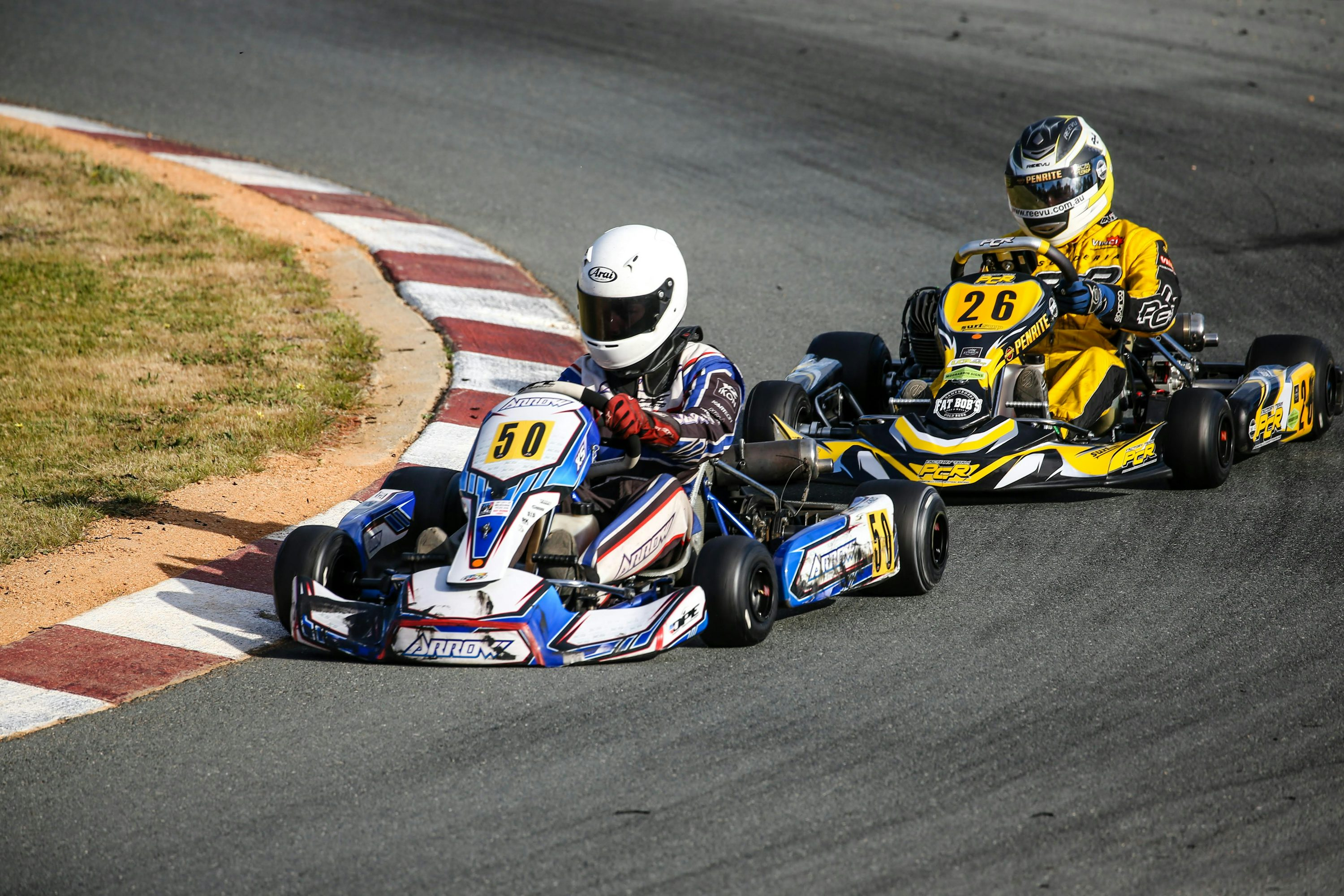My CFD Projects

Mercedes G-Class W463
Steady state simulation

Ferrari F2004
Steady state simulation

Influence of slipstream in karting
Steady state simulation to analyse the effect of slipstream in relation to distance
Welcome to my portfolio ! I am passionate about aerodynamics and motorsport, and this portfolio showcases a selection of CFD projects conducted with OpenFOAM on various vehicles. If you are interested in potential collaborations or opportunities, please do not hesitate to contact me !
Discover my projectsCars have been part of my life since I was a child. I grew up playing racing video games and admiring every beautiful car I saw on the street.
I discovered motorsport through rental karting, where I raced both in sprint and endurance formats, and I still enjoy driving today. To take it further, my father and I bought a competition kart, turning weekends into moments of pure racing fun.
My passion keeps growing: I follow WEC and Formula 1 races, practice sim racing, and explore the technical side of motorsport. During my aerospace engineering studies, I discovered fluid mechanics, and it instantly clicked with me. That's how I fell in love with aerodynamics, a perfect mix of my academic background and my lifelong passion for cars.
I am currently in my fifth year of aerospace engineering, and I am looking for an internship starting in March 2026 to further develop my skills in aerodynamics and CFD. One day, I hope to work as an aerodynamicist in Formula 1, combining my enthusiasm for racing with my skills in fluid dynamics.

Steady state simulation

Steady state simulation

Steady state simulation to analyse the effect of slipstream in relation to distance
The goal of this project is to carry out a CFD simulation of the 2018 Mercedes G-Class W463 using OpenFOAM.
The Mercedes-Benz G-Class is an iconic vehicle, originally designed in the late 1970s as a robust and versatile off-road model. Over the decades, it has become a symbol of durability and prestige, while retaining its characteristic boxy design and high ground clearance.
The geometry is a simplified model of the G-Class, available at the following link: https://grabcad.com/library/mercedes-g-class-for-cfd-1
Using a simplified geometry instead of the original reduces the complexity of the mesh, leading to faster preprocessing, lower computational cost, and improved numerical stability. However, since it is not the exact geometry, it cannot capture the full physical realism. The goal of this study, however, is to gain insights and identify flow trends, and the geometry used here is sufficient to achieve these objectives.
The car length is 𝐿 = 4.6 𝑚. The fluid domain used is the following:
The following images show the distribution of 𝑦+ on the car within the range of 30-300. Most of the car falls within the range, except for certain areas particularly around the windshield where little improvement is possible..
The following forces represent the forces acting on car along the X and Z directions.
| Fx [N] | Fz [N] |
|---|---|
| 972.19 | -185.557 |
In aerodynamics, the lift and drag forces are typically normalized by the dynamic pressure and a reference area to allow comparison between different flow conditions and geometries. The resulting dimensionless quantities are the lift and drag coefficients, noted Cl and Cd.
The reference area used to calculate the coefficients is 𝐴𝑟𝑒𝑓 = 3.17 m2
| Cd | Cl |
|---|---|
| 0.571 | -0.104 |
The pressure, or static pressure, is what we all think of when we say pressure. In fluid mechanics, we like to normalize things to compare across different flow conditions, so since the pressure field in an external flow scales with the freestream dynamic pressure, we divide by the dynamic pressure to get a pressure coefficient, or Cp.
As air moves along a surface, it creates friction. Like before, we normalize by the freestream dynamic pressure to get a skin friction coefficient, or Cf. In all of my Cf images, they'll be 'textured' by a line integral convolution, which is the direction of the friction along the surface, and therefore the direction of flow along the surface.
The next image was obtained using Surface LIC (Line Integral Convolution) on a slice plane.
The total pressure is a measure of the energy in the air, defined as the sum of the dynamic pressure and static pressure, which are the kinetic and potential energies of the air, respectively. Like before, the total pressure is divided by the freestream dynamic pressure to provide the total pressure coefficient, or CpT for short.
The following images show the isosurface of the total pressure coefficient at a value of 0. This representation helps to identify the sources of drag.
In this report, I will not provide a detailed explanation of the car’s aerodynamics, as this is not the main objective of the project, but I will give a brief overview.
The first and most obvious observation is that the G-Class has very poor aerodynamic performance, as reflected by its high drag coefficient. This vehicle was not designed for aerodynamic efficiency but rather for off-road capability. One major drawback is its height, which generates a large wake zone behind the car. The isosurface plots of Cp clearly show this effect, with a significant volume which show the drag.
The general shape of the car also creates problems. Its boxy geometry, especially the flat front, makes it difficult for the airflow to escape smoothly, resulting in regions of high pressure and thus increased drag. The elevated body exposes the wheels directly to the flow, which further adds to drag. Finally, the windshield is not inclined enough, which also increases resistance.
The goal of this project is to carry out a CFD simulation on the Ferrari F2004 using OpenFoam.
The Ferrari F2004 is one of the most iconic and dominant single-seaters in Formula 1 history. Designed by Scuderia Ferrari for the 2004 World Championship season, it was the result of the work of Rory Byrne (aerodynamics and design), Ross Brawn (technical director) and Paolo Martinelli (engine). Powered by a 3.0-litre naturally aspirated V10 engine (the Ferrari Tipo 053), the F2004 combined raw power, remarkable reliability and aerodynamic efficiency.
This single-seater distinguished itself through its unrivalled dominance, giving Michael Schumacher his seventh and final world title and Ferrari its sixth consecutive constructors' title. It won 15 of the 18 races in the 2004 season, making it one of the most successful cars in history.
The aerodynamics of the F2004 represented the culmination of the V10 era, before the major regulatory changes introduced in 2005. It was notable for its exceptional balance between downforce and drag, efficient flow management around the pontoons and a high-performance rear diffuser. Its design was a refined evolution of the F2003-GA, with a lighter chassis, a lower centre of gravity and outstanding mechanical reliability.
The geometry is a simplified model of the Ferrari F2004, available at the following link: https://grabcad.com/library/ferrari-f2004-formula-1-simplified-cad-design-for-cfd-1
The car model is simplified in several areas. The seat is fully closed to prevent airflow from entering the cockpit, and only the driver’s head is kept, as it has a significant impact on drag. Smaller aerodynamic details such as winglets on the sidepods and the bargeboards are left out. The side deflector attached to the sidepod is also missing, as well as mirrors and the supports of the bargeboards. Regarding the underbody, it may not match the original one, since finding accurate references is difficult. The air intakes are not modelled as functional; in reality the airflow would be directed into the engine or radiators, but here they are closed surfaces, meaning the flow simply hits them. On the other hand, the front and rear wings are close to the real design. I am aware that the absence of these elements can cause noticeable deviations compared to the actual car, but the objective of this project is to capture the general trend of airflow around a Formula 1 car.
The car length is 𝐿 = 4.47 𝑚. The fluid domain used is the following:
The following images show the distribution of 𝑦+ on the car within the range of 30-300. Most of the car falls within the range, except for certain areas, particularly around the rear suspension where little improvement is possible.
The least-squares gradient schemes with a limiter were used for all gradients, except for the pressure gradient, which was set to Gauss linear
A second-order linear upwind scheme was used for momentum advection, while first-order Gauss upwind schemes were used for the convection of turbulence quantities. When second-order schemes were applied to the turbulence quantities, the solution became highly oscillatory and diverged; therefore, first-order schemes were retained for stability.
When designing a vehicle of a set size, there's not much use in normalizing by the area, as we can't just scale the vehicle to be larger or smaller. Further, it's possible for a vehicle to have a smaller lift coefficient than another, but still generate more lift due to a larger frontal area. Because of this, it's much easier to work in terms of the lift (or drag) coefficient multiplied by the area. In our case the surface used is S = 1.24 m²
| SCl [m²] | SCd [m²] | | Cl / Cd | |
|---|---|---|
| -0.997 | 0.897 | 1.11 |
The following images show the forces in the X and Z directions. They help to understand the drag and downforce produced by each element.
| Elements | Downforce contribution [%] | Drag contribution [%] |
|---|---|---|
| Bodywork + Suspension + Driver | -46.66 | 34.19 |
| Underbody | 78.88 | 7.24 |
| Front tire | 1.55 | 15.95 |
| Front wing | 28.95 | 2.83 |
| Rear tire | 1.86 | 17.66 |
| Rear wing | 36.97 | 13.59 |
| Bargeboards | -1.55 | 8.53 |
As shown in the table, most of the downforce is generated by the underbody, the rear wing, and the front wing. The underbody plays a crucial role in a Formula 1 car, as it produces the majority of the downforce. On the drag side, the bodywork accounts for most of the overall drag.
The pressure, or static pressure, is what we all think of when we say pressure. In fluid mechanics, we like to normalize things to compare across different flow conditions, so since the pressure field in an external flow scales with the freestream dynamic pressure, we divide by the dynamic pressure to get a pressure coefficient, or Cp.
As air moves along a surface, it creates friction. Like before, we normalize by the freestream dynamic pressure to get a skin friction coefficient, or Cf. In all of my Cf images, they'll be 'textured' by a line integral convolution, which is the direction of the friction along the surface, and therefore the direction of flow along the surface.
The next image was obtained using Surface LIC (Line Integral Convolution) on a slice plane.
The total pressure is a measure of the energy in the air, defined as the sum of the dynamic pressure and static pressure, which are the kinetic and potential energies of the air, respectively. Like before, the total pressure is divided by the freestream dynamic pressure to provide the total pressure coefficient, or CpT for short.
The following video represent the isosurface of the total pressure coefficient when egal to 0. This representation helps to understand where drag come from.
In this project, the goal was not to perfectly replicate the real aerodynamic performance of the Ferrari F2004, but rather to understand the main flow structures and aerodynamic behavior of a Formula 1 car. The results highlight how each component contributes to downforce and drag, confirming the crucial role of the underbody and wings in achieving aerodynamic efficiency. Overall, this simulation provides valuable insight into how modern race cars balance downforce and drag.